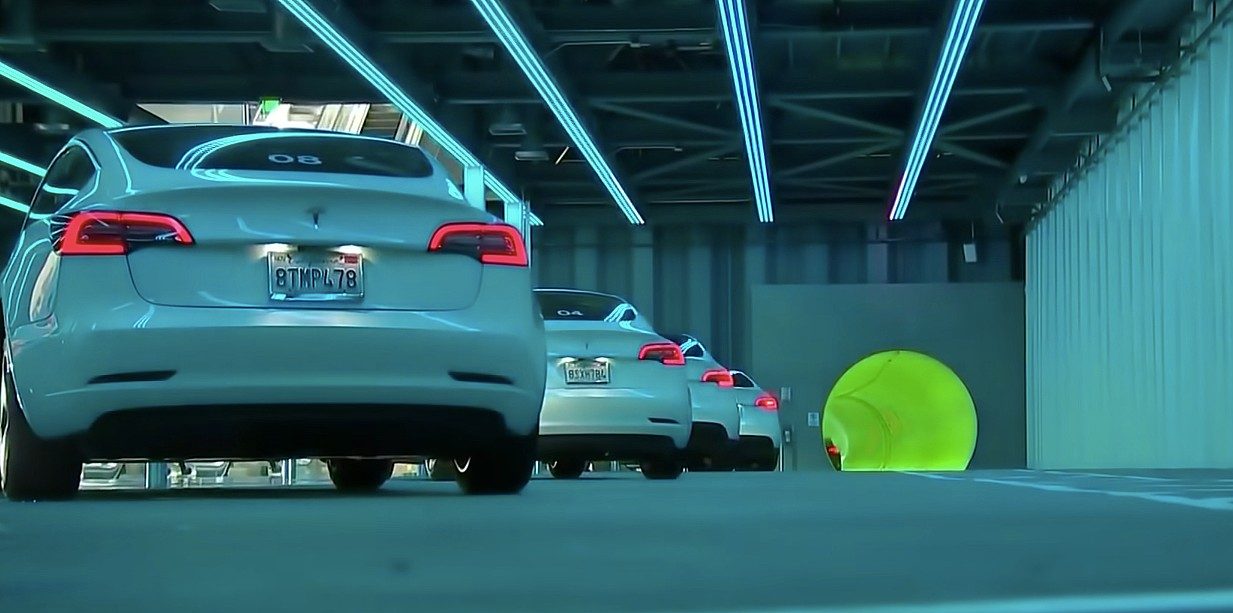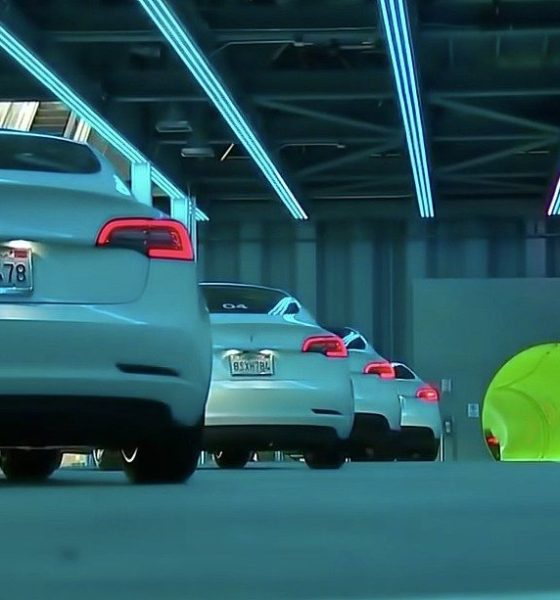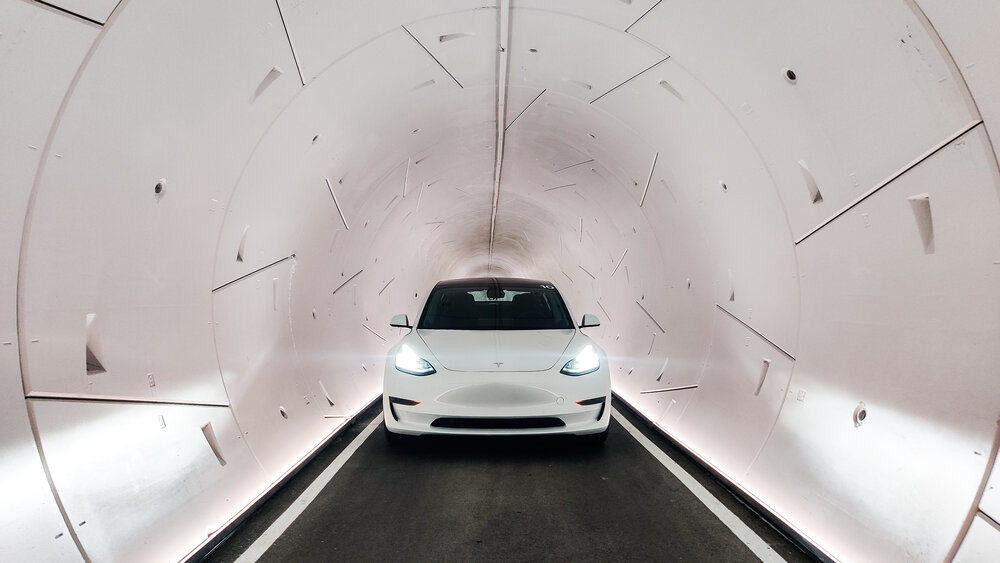

News
The Boring Company’s skeptics need to calm down about the LVCC Loop
The Boring Company’s Las Vegas Convention Center Loop has been completed, and as with every other project from Elon Musk, the initiative has attracted a barrage of criticism from skeptics, some of whom have ridiculed and mocked the transport tunnel system. But just like SpaceX critics who insisted that orbital rockets would never land on a drone ship in the middle of the ocean, or Tesla skeptics who insisted that the Model 3 was a lemon that no one would buy, The Boring Company’s critics may very well be missing a crucial point.
The criticisms surrounding the LVCC Loop are vast, with publications like CNET noting that the system was “disappointing” and “lame” due to its capability to only transport 4,400 people from a fleet of 62 Teslas. VICE described coverage of the LVCC Loop as the “most embarrassing news clip in American transportation history.” Tech publication Futurism argued that the LVCC Loop is “incredibly inefficient.” Even dedicated EV blogs have dismissed the project as “boring.”

And these are just from some publications. A look at the reactions from social media would show numerous users, including the usual band of Tesla and SpaceX skeptics, calling out the LVCC Loop for being yet another example of why Elon Musk is a failure. This became particularly notable after celebrity Kylie Jenner posted a short video of a trip in the Las Vegas tunnels. But amidst the frothing mouths of anti-Elon Musk individuals and those that simply disbelieve the potential of The Boring Company lies one key point—the LVCC Loop, at its current state, is not the end-all and be-all of the tunneling startup’s ambitions.
One thing that Boring Company critics typically forget is the fact that the LVCC Loop’s tunnels are incredibly cheap and quick to build. It’s rarely brought up now, but The Boring Company was one of two companies that were shortlisted for the Las Vegas Convention Center transport system. The other company was Austria-based Doppelmayr Garaventa Group, which proposed a traditional above-ground campus transit system estimated to cost $215 million to complete. The LVCC Loop was completed for $52.5 million. It’s scalable as well, with the LVCC Loop easily being expanded into the larger, more expansive Vegas Loop.
While the Las Vegas Convention Center Loop’s current iteration is a conservative version of Elon Musk’s ambitious tunnel concepts, the core of The Boring Company’s innovation is present in the project. This is because ultimately, The Boring Company’s goal is to make tunneling quicker and more efficient. In this regard, the startup was able to accomplish its goals, and that’s without using its flagship tunnel boring machine. As per previous reports, The Boring Company used Godot+, an upgraded version of its first TBM, to complete the LVCC Loop.
Kylie Jenner showing off The Boring Company tunnel in Las Vegas 👀
🔥 @elonmusk pic.twitter.com/wwN0yc9zIx
— SAINT (@saint) April 14, 2021
The Boring Company is hard at work developing Prufrock, a next-generation, all-electric tunnel boring machine that’s designed to be capable of digging 1 mile per week, or about six times faster than Godot+. Prufrock is designed to begin tunneling within 48 hours of its arrival onsite as well, making its deployments very easy and quick. Machines such as Prufrock, and the incredibly low cost of its tunnels, are The Boring Company’s true disruption.
This is incredibly impressive considering that Godot+ is no slouch. While speaking to German publication Manager Magazin, Martin Herrenknecht, the founder of Herrenknecht AG, dismissed The Boring Company, stating that Elon Musk’s TBMs were only capable of drilling 20 meters in one week. In a statement to Teslarati, an individual familiar with the matter clarified that Herrenknecht’s information was inaccurate, as Godot+ had already managed to dig over 40 meters in one day.

Perhaps the most notable factor to point out amidst the intense criticisms against the LVCC Loop is the fact that the system will most definitely not stay the way it is today. Yes, it only deploys Teslas that are still driven by human drivers for now, but that will soon improve with the use of Autopilot. Yes, the system only has a capacity of 4,400 people per hour with 62 Teslas today, but the vehicles could soon travel quicker, and larger transport pods that hold 16 people per vehicle could improve the system’s capacity. It’s just a bit hard to see these things, or even acknowledge them, if one were already under the notion that The Boring Company is fraudulent, because Elon Musk.
The Boring Company is only getting started. The LVCC Loop could also be considered as a proof of concept, and it will be expanded to other areas in Las Vegas. Improvements to the LVCC Loop, such as the deployment of more Teslas and the use of Autopilot, could also be implemented quickly. Similar tunnels could be built in Florida soon as well. And once Prufrock is deployed, and once other low-cost tunnels are constructed at speeds that have never been seen before, The Boring Company’s skeptics might very well find themselves in the same boat as those who were absolutely certain that orbital rockets could not land on an autonomous barge, or that electric vehicles are simply not feasible.
Don’t hesitate to contact us for news tips. Just send a message to tips@teslarati.com to give us a heads up.

News
Tesla FSD fleet is nearing 7 billion total miles, including 2.5 billion city miles
As can be seen on Tesla’s official FSD webpage, vehicles equipped with the system have now navigated over 6.99 billion miles.

Tesla’s Full Self-Driving (Supervised) fleet is closing in on almost 7 billion total miles driven, as per data posted by the company on its official FSD webpage.
These figures hint at the massive scale of data fueling Tesla’s rapid FSD improvements, which have been quite notable as of late.
FSD mileage milestones
As can be seen on Tesla’s official FSD webpage, vehicles equipped with the system have now navigated over 6.99 billion miles. Tesla owner and avid FSD tester Whole Mars Catalog also shared a screenshot indicating that from the nearly 7 billion miles traveled by the FSD fleet, more than 2.5 billion miles were driven inside cities.
City miles are particularly valuable for complex urban scenarios like unprotected turns, pedestrian interactions, and traffic lights. This is also the difference-maker for FSD, as only complex solutions, such as Waymo’s self-driving taxis, operate similarly on inner-city streets. And even then, incidents such as the San Francisco blackouts have proven challenging for sensor-rich vehicles like Waymos.
Tesla’s data edge
Tesla has a number of advantages in the autonomous vehicle sector, one of which is the size of its fleet and the number of vehicles training FSD on real-world roads. Tesla’s nearly 7 billion FSD miles then allow the company to roll out updates that make its vehicles behave like they are being driven by experienced drivers, even if they are operating on their own.
So notable are Tesla’s improvements to FSD that NVIDIA Director of Robotics Jim Fan, after experiencing FSD v14, noted that the system is the first AI that passes what he described as a “Physical Turing Test.”
“Despite knowing exactly how robot learning works, I still find it magical watching the steering wheel turn by itself. First it feels surreal, next it becomes routine. Then, like the smartphone, taking it away actively hurts. This is how humanity gets rewired and glued to god-like technologies,” Fan wrote in a post on X.
News
Tesla starts showing how FSD will change lives in Europe
Local officials tested the system on narrow country roads and were impressed by FSD’s smooth, human-like driving, with some calling the service a game-changer for everyday life in areas that are far from urban centers.

Tesla has launched Europe’s first public shuttle service using Full Self-Driving (Supervised) in the rural Eifelkreis Bitburg-Prüm region of Germany, demonstrating how the technology can restore independence and mobility for people who struggle with limited transport options.
Local officials tested the system on narrow country roads and were impressed by FSD’s smooth, human-like driving, with some calling the service a game-changer for everyday life in areas that are far from urban centers.
Officials see real impact on rural residents
Arzfeld Mayor Johannes Kuhl and District Administrator Andreas Kruppert personally tested the Tesla shuttle service. This allowed them to see just how well FSD navigated winding lanes and rural roads confidently. Kruppert said, “Autonomous driving sounds like science fiction to many, but we simply see here that it works totally well in rural regions too.” Kuhl, for his part, also noted that FSD “feels like a very experienced driver.”
The pilot complements the area’s “Citizen Bus” program, which provides on-demand rides for elderly residents who can no longer drive themselves. Tesla Europe shared a video of a demonstration of the service, highlighting how FSD gives people their freedom back, even in places where public transport is not as prevalent.
What the Ministry for Economic Affairs and Transport says
Rhineland-Palatinate’s Minister Daniela Schmitt supported the project, praising the collaboration that made this “first of its kind in Europe” possible. As per the ministry, the rural rollout for the service shows FSD’s potential beyond major cities, and it delivers tangible benefits like grocery runs, doctor visits, and social connections for isolated residents.
“Reliable and flexible mobility is especially vital in rural areas. With the launch of a shuttle service using self-driving vehicles (FSD supervised) by Tesla in the Eifelkreis Bitburg-Prüm, an innovative pilot project is now getting underway that complements local community bus services. It is the first project of its kind in Europe.
“The result is a real gain for rural mobility: greater accessibility, more flexibility and tangible benefits for everyday life. A strong signal for innovation, cooperation and future-oriented mobility beyond urban centers,” the ministry wrote in a LinkedIn post.
News
Tesla China quietly posts Robotaxi-related job listing
Tesla China is currently seeking a Low Voltage Electrical Engineer to work on circuit board design for the company’s autonomous vehicles.

Tesla has posted a new job listing in Shanghai explicitly tied to its Robotaxi program, fueling speculation that the company is preparing to launch its dedicated autonomous ride-hailing service in China.
As noted in the listing, Tesla China is currently seeking a Low Voltage Electrical Engineer to work on circuit board design for the company’s autonomous vehicles.
Robotaxi-specific role
The listing, which was shared on social media platform X by industry watcher @tslaming, suggested that Tesla China is looking to fill the role urgently. The job listing itself specifically mentions that the person hired for the role will be working on the Low Voltage Hardware team, which would design the circuit boards that would serve as the nervous system of the Robotaxi.
Key tasks for the role, as indicated in the job listing, include collaboration with PCB layout, firmware, mechanical, program management, and validation teams, among other responsibilities. The role is based in Shanghai.
China Robotaxi launch
China represents a massive potential market for robotaxis, with its dense urban centers and supportive policies in select cities. Tesla has limited permission to roll out FSD in the country, though despite this, its vehicles have been hailed as among the best in the market when it comes to autonomous features. So far, at least, it appears that China supports Tesla’s FSD and Robotaxi rollout.
This was hinted at in November, when Tesla brought the Cybercab to the 8th China International Import Expo (CIIE) in Shanghai, marking the first time that the autonomous two-seater was brought to the Asia-Pacific region. The vehicle, despite not having a release date in China, received a significant amount of interest among the event’s attendees.








